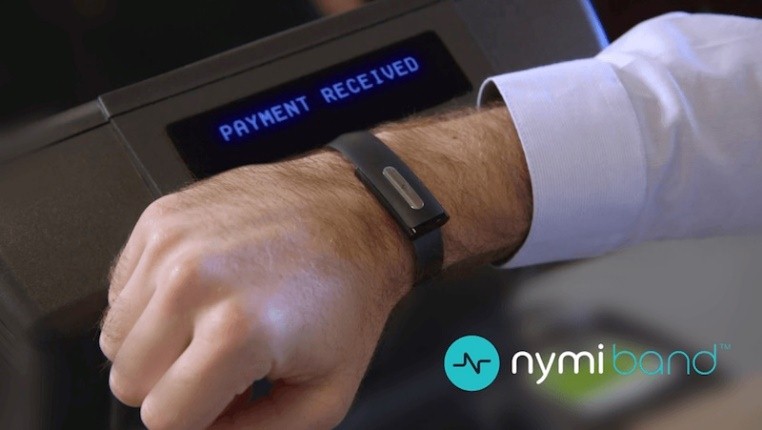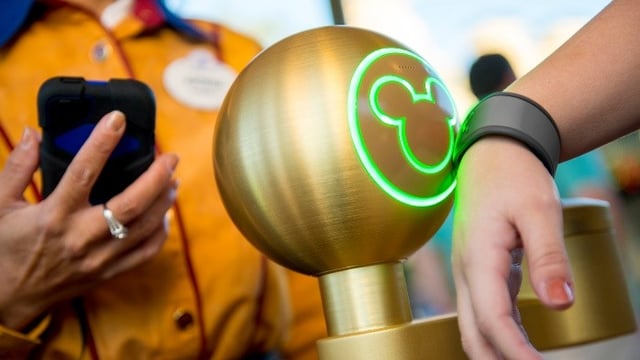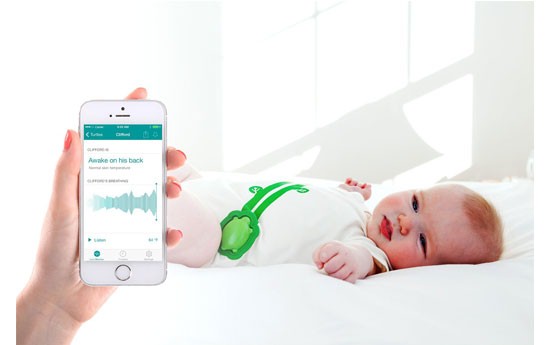"In the next century, planet earth will don an electronic skin.
It will use the Internet as a scaffold to support and transmit its sensations" -- - Neil Gross 1999
Looks like what Neil Gross had said in 1999 has already become a reality today. The new wave or Internet of Things or the world of connected devices is going much beyond smartphones and laptops. It’s going towards smart cities, connected cars, smart healthcare and much more – in short, it is going towards a connected life. Let us have a look at some of the cool real-life applications of IoT.
Nymi Wristband
While Apple Pay verifies the payments using fingerprints, this wristband uses your heartbeat for that. Nymi wristband uses your “unique cardiac rhythm” to verify your identity. As long as you wear the band in your hand, the authentication is active and it is automatically deactivated when the band is removed from your hands. Forget about carrying your wallet when you go for a run but that will not stop you from shopping for a can of milk on your way back though – as far as you are wearing a Nymi Band!
 Smart Cities
Smart Cities
Smart cities have several IoT applications which are inter-connected and need to be managed. A variety of sensors, devices, and software solutions integrate and form a “system of systems”. Some of the prominent IoT applications which are used in the smart cities include Smart Water Management, Smart Waste Management, and Smart Parking.
The water system is one of the most critical infrastructure items for smart cities. With the growing population, the consumption of water is also growing. “Smart Water Management” is nothing but an infrastructure that ensures that water is managed effectively. A smart water system gathers useful and actionable data about the flow, pressure, and distribution of a city's water and uses this information to accurately forecast the water consumption and use.
Smart Parking makes use of sensors, applications, and (almost) real-time data to allow users know about available and unavailable parking spots. Smart parking aims at decreasing the time spent in manually searching for the parking spot. The smart parking solution can also include options for parking payments, notifications, historical parking information and car searching options.
IoT has a potential to dramatically improve the waste management practices in smart cities. With the use of sensors, connectivity and analytics, the efficiency of waste management can be improved. Smart Waste Management optimizes the garbage collection vehicles utilization by sending those only when necessary. It, in turn, helps in making the energy usage efficient, reduce fuel usage and reduce the overall costs.
Mimo Monitors
This new type of infant monitor uses sensor technology and gives parents insight into their baby’s sleep. It provides them real-time information about their baby's breathing patterns, body temperature, body position, activity level, and early warnings – all on their smartphones.
Rolls-Royce Intelligent Engines
Rolls-Royce is collaborating with Microsoft to transform the aerospace industry. The Rolls-Royce’s TotalCare Services is incorporating advanced analytics and IoT to aggregate data from disparate sources, integrate large quantities of airline operational data and apply smart data analysis capabilities and predictive tools to help airlines reduce fuel usage and fly routes more efficiently. This information will also be useful for ensuring that the right teams and equipment are in place to optimally service the engines.
Virgin Atlantic
Do you know that every component of Virgin Atlantic’s Boeing 787 is attached to a wireless airplane network? Per flight, the aircraft creates more than 1/3rd of a terabyte of data and gathers real-time IoT data on the flight performance, maintenance etc. With this, if there is even a small problem with, say, the engines, the ground staff knows about it even before the plane lands and the staff can make sure that the parts are ready before the plane lands. It has helped Virgin Atlantic in ensuring safer flights, lesser delays, and of course, happier customers.
UPS
UPS, one of the world’s largest shipping companies, has leveraged the power of IoT and big data analytics to improve its efficiency, save money and also reduce the impact on the environment. Sensors are used on delivery vehicles to monitor their speed, mileage, stops, and the overall engine health. Using the data of more than 200 data points for each vehicle, UPS takes measures to reduce idling time and fuel consumption.
John Deere
John Deere, one of the leaders in the area of equipment manufacturer, uses IoT and Big Data system and sensors to monitor the soil health, moisture levels, wind speed, solar radiation, rainfall, air and soil temperature, and leaf wetness and sends this data to farmers. The farmers can use this information to make more timely and accurate irrigation decisions.
Disney World Magic Band
Disney World's MagicBand is a wonderful example of IoT and big data working together. The MagicBand is a sensor-enabled wristband that the Disney World visitors can use to do all the things at Disney World –
right from check into the hotel room, buy their lunch, buy rides, and also reserve a spot for specific attractions.
When the wearers 'check in' at certain posts using the band, Disney collects this data on visitor movement and uses it to create a smooth experience for guests, allocate sufficient staff for rides and attractions, and optimize the inventory at shops and restaurants.

Kroger Smart Shelf
Kroger, one of the world’s largest supermarkets having annual sales of more than $110 billion, has embraced IoT to enhance its profitability, customer satisfaction, and workforce efficiency. Kroger also implemented interactive shelves and products using testing sensors and analytics technology at some of its stores – these shelves tell you exactly where the items on your grocery list are and also send you an alert if you accidentally pass those by on the shelf. The shelves are also smart enough to highlight the exact item you are looking for on the crowded rack.
Ingestible Sensors
This is one IoT application which is set to revolutionize the healthcare industry. Ingestible Sensors are pill-sized sensors which measure if the patients are taking prescribed medications or not. Especially for old patients with chronic illnesses, such as cardiovascular disease or high blood pressure, non-adherence to medications could cause severe health complications and hospitalizations. Upon swallowing, these sensors get activated and start gathering the data. If the patient forgets to take medication or takes incorrect medication, the sensors automatically send a message to a family member’s or caregiver’s smartphone.
Examples like these convince us that IoT has already become a reality. New developments are happening at a rapid pace and newer applications are evolving every single day. Have you come across any such unique interesting application? We would be curious to know about it. Do share it as a comment.







